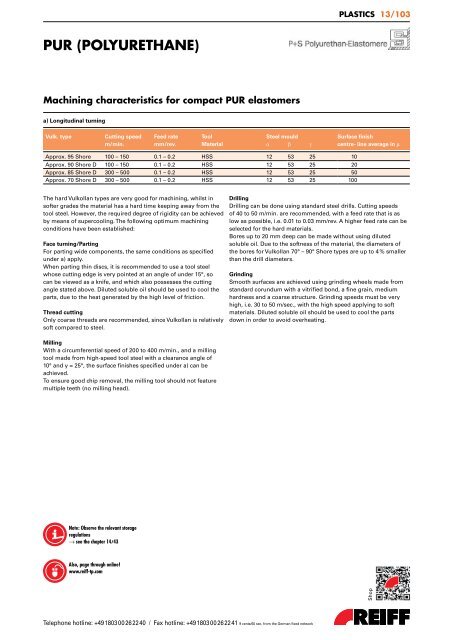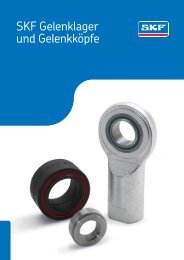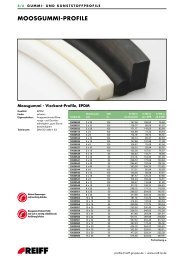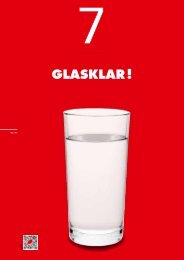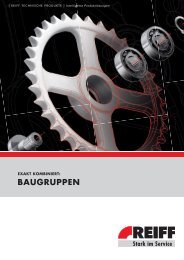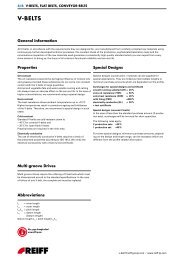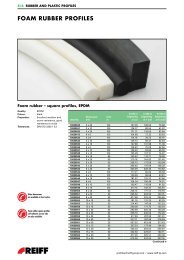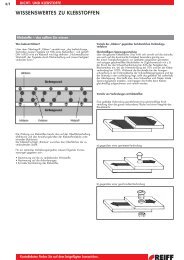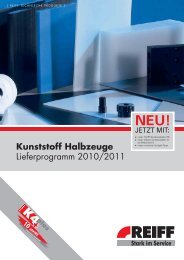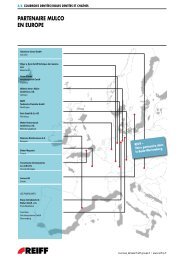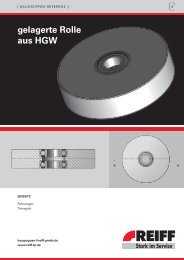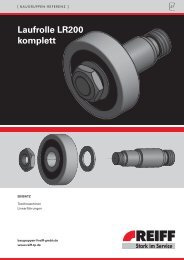REGISTER OVERVIEW PLASTICS
REGISTER OVERVIEW PLASTICS
REGISTER OVERVIEW PLASTICS
You also want an ePaper? Increase the reach of your titles
YUMPU automatically turns print PDFs into web optimized ePapers that Google loves.
PUR (POLYURETHANE)<br />
Machining characteristics for compact PUR elastomers<br />
a) Longitudinal turning<br />
The hard Vulkollan types are very good for machining, whilst in<br />
softer grades the material has a hard time keeping away from the<br />
tool steel. However, the required degree of rigidity can be achieved<br />
by means of supercooling. The following optimum machining<br />
conditions have been established:<br />
Face turning/Parting<br />
For parting wide components, the same conditions as specified<br />
under a) apply.<br />
When parting thin discs, it is recommended to use a tool steel<br />
whose cutting edge is very pointed at an angle of under 15°, so<br />
can be viewed as a knife, and which also possesses the cutting<br />
angle stated above. Diluted soluble oil should be used to cool the<br />
parts, due to the heat generated by the high level of friction.<br />
Thread cutting<br />
Only coarse threads are recommended, since Vulkollan is relatively<br />
soft compared to steel.<br />
Milling<br />
With a circumferential speed of 200 to 400 m/min., and a milling<br />
tool made from high-speed tool steel with a clearance angle of<br />
10° and y = 25°, the surface finishes specified under a) can be<br />
achieved.<br />
To ensure good chip removal, the milling tool should not feature<br />
multiple teeth (no milling head).<br />
Telephone hotline: +49 1803 00 26 22 40 / Fax hotline: +49 1803 00 26 22 41 9 cents/60 sec. from the German fixed network<br />
<strong>PLASTICS</strong> 13/103<br />
Vulk. type Cutting speed Feed rate Tool Steel mould Surface finish<br />
m/min. mm/rev. Material a b γ centre- line average in µ<br />
Approx. 95 Shore 100 – 150 0.1 – 0.2 HSS 12 53 25 10<br />
Approx. 90 Shore D 100 – 150 0.1 – 0.2 HSS 12 53 25 20<br />
Approx. 85 Shore D 300 – 500 0.1 – 0.2 HSS 12 53 25 50<br />
Approx. 70 Shore D 300 – 500 0.1 – 0.2 HSS 12 53 25 100<br />
Note: Observe the relevant storage<br />
regulations<br />
→ see the chapter 14/43<br />
Also, page through online!<br />
www.reiff-tp.com<br />
Drilling<br />
Drilling can be done using standard steel drills. Cutting speeds<br />
of 40 to 50 m/min. are recommended, with a feed rate that is as<br />
low as possible, i.e. 0.01 to 0.03 mm/rev. A higher feed rate can be<br />
selected for the hard materials.<br />
Bores up to 20 mm deep can be made without using diluted<br />
soluble oil. Due to the softness of the material, the diameters of<br />
the bores for Vulkollan 70° – 90° Shore types are up to 4 % smaller<br />
than the drill diameters.<br />
Grinding<br />
Smooth surfaces are achieved using grinding wheels made from<br />
standard corundum with a vitrified bond, a fine grain, medium<br />
hardness and a coarse structure. Grinding speeds must be very<br />
high, i.e. 30 to 50 m/sec., with the high speed applying to soft<br />
materials. Diluted soluble oil should be used to cool the parts<br />
down in order to avoid overheating.<br />
Shop


